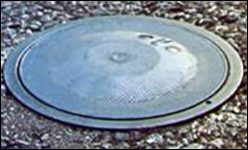
RFID technology helps manage disabled parking spaces
[ad_1]
Westminster in the United Kingdom is trying out an RFID system to identify vehicles driven by disabled drivers and confirm whether they have allocated space for parking. The scheme is part of the parking management system provided by the Australian parking technology company Smart Parking.
The pilot project was officially launched last year and will end next month. The project installed SmartEye sensors with RFID capabilities in 64 disabled parking lots in Westminster, and installed EPermit RFID readers on cars authorized to park in these parking lots. These sensors can detect the vehicle and transmit the data to the server, and the software on the server can identify the authorized vehicle based on the tag.

(SmartEye is a wireless infrared sensor that can be installed on the street surface, it can detect car parking)
Westminster is one of the busiest areas in London. The area is located on the banks of the Thames and includes Buckingham Palace, Westminster Abbey and the Houses of Parliament. Simon Morgan, the person in charge of the city management and community and the leader of the smart parking project, said: “There is a high demand for limited parking areas in this area.”
Morgan said that usually 80% of the parking areas in the area are parked. He also said: “Drivers looking for parking spaces everywhere has also exacerbated congestion and air quality problems.” For disabled drivers, this problem will become more serious if able-bodied drivers park their cars in disabled parking areas.
In order to better manage parking problems, Westminster installed SmartPark’s SmartPark solution in 2013. Initially, 187 infrared sensors were installed in 144 parking spaces. Smart Parking project manager and solution architect Martin Hooker said that in the parking sensor system pilot project, SmartEye infrared sensors are installed on the roads of parking spaces to detect whether people are parking. Receivers installed nearby will send the sensor data to Smart Parking’s content management system SmartRep. The battery-powered sensor uses a 433 MHz signal to transmit parking status data to the receiver using a proprietary protocol.
In addition, the company has also developed a ParkRight application that can be downloaded from Google Play and iTunes, so that users can view the available parking spaces in Westminster via their smartphones. The app can guide the driver to choose a parking space and make payment.
After the completion of the pilot project, Westminster City Council installed 3,000 infrared sensors in 2014 to improve the parking experience, facilitate payment and balance the allocation of parking spaces.
At the same time, the city council is also studying other uses of the technology to ensure that disabled drivers stop normally. Since 2008, 28,000 violations have been discovered in the region, and the number of violations last year was 1,500.
In Westminster, the city council has allocated 193 specific parking spaces for disabled residents. In order to manage these parking spaces, the city council has established a traffic officer’s position to check regularly to ensure that these parking spaces are not illegally occupied. However, Morgan also said that parking services departments still often receive complaints of illegal occupation.
The pilot program focuses on the illegal occupation of disabled parking spaces. The solution attaches a 433MHz battery-powered RFID tag EPermit to the windshield of the vehicle. The tag sends a unique ID number via a proprietary air interface protocol every few seconds. When an authorized vehicle is parked in a parking space, the SmartEye sensor with a built-in RFID reader will read the tag ID and transmit it to the server, and the software on the server will make a judgment based on the ID number. If the vehicle does not have a suitable EPermit number, the software will send a text message to the traffic officer’s mobile phone to remind.

(Traffic personnel can use their mobile devices to access the SmartRep software to view real-time information about parking spaces occupancy)
Currently, the pilot project is still underway. Morgan said: “It is too early to make an evaluation. But as a concept, the technology has been successful.” The system can successfully determine the parking person’s authority and issue a warning.
Westminster City Council also intends to conduct customer surveys to determine the effectiveness of the technology.
After the pilot project ended, the city council considered using EPermit technology in the remaining 129 disabled parking spaces. In addition, the city council also plans to evaluate another version of the system to see if it can be used for parking lot billing.
Currently, Smart Parking has installed this program in dozens of countries all over the world. Westminster is the first to use RFID technology. So far, a total of 37,500 sensors have been installed in 42 cities in 15 countries. Smart Parking designs and manufactures all hardware including tags, readers, badges, and sensors.
(Exclusive manuscript of rfid world network, please indicate the source author for reprinting!)
[ad_2]



